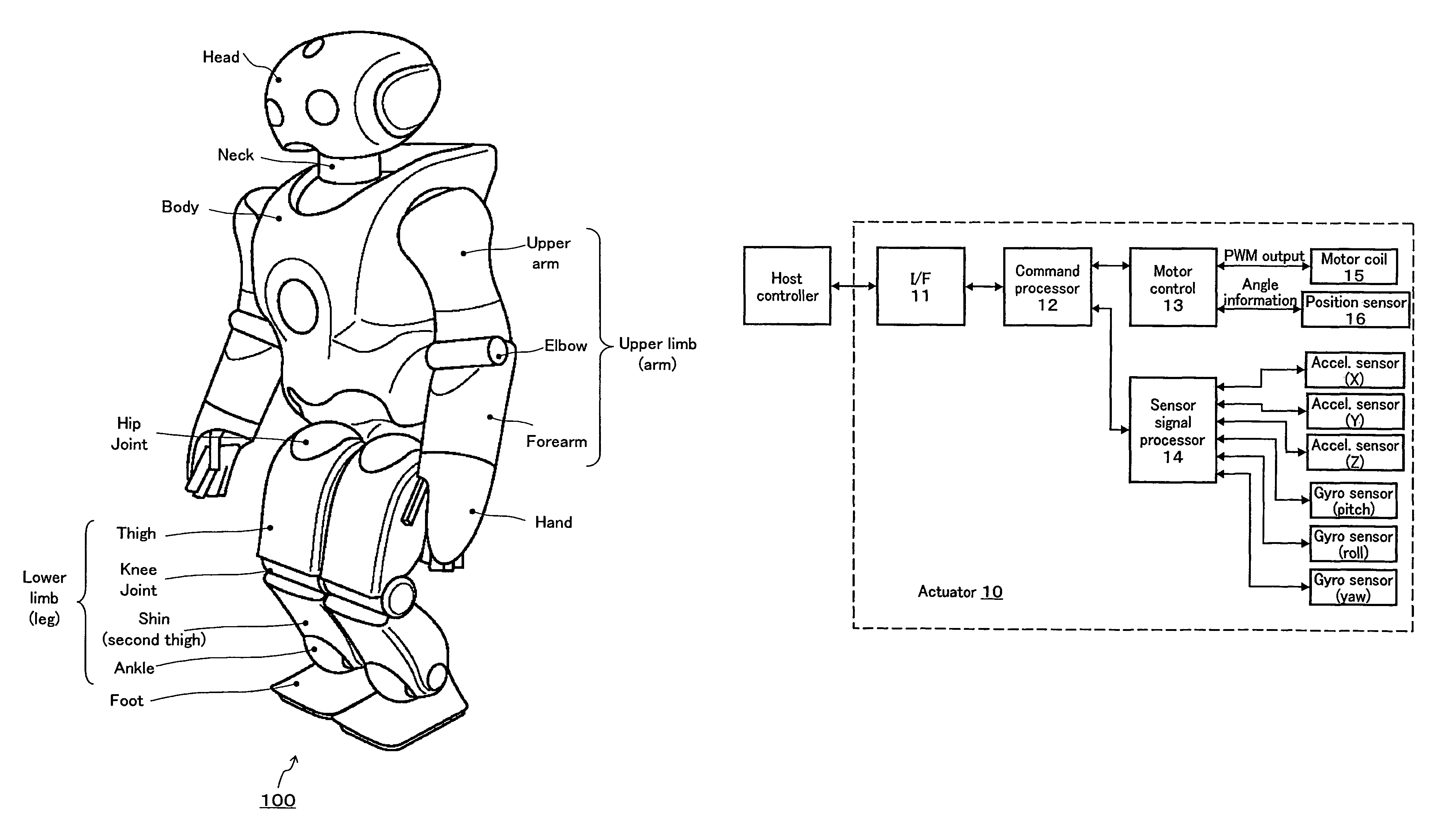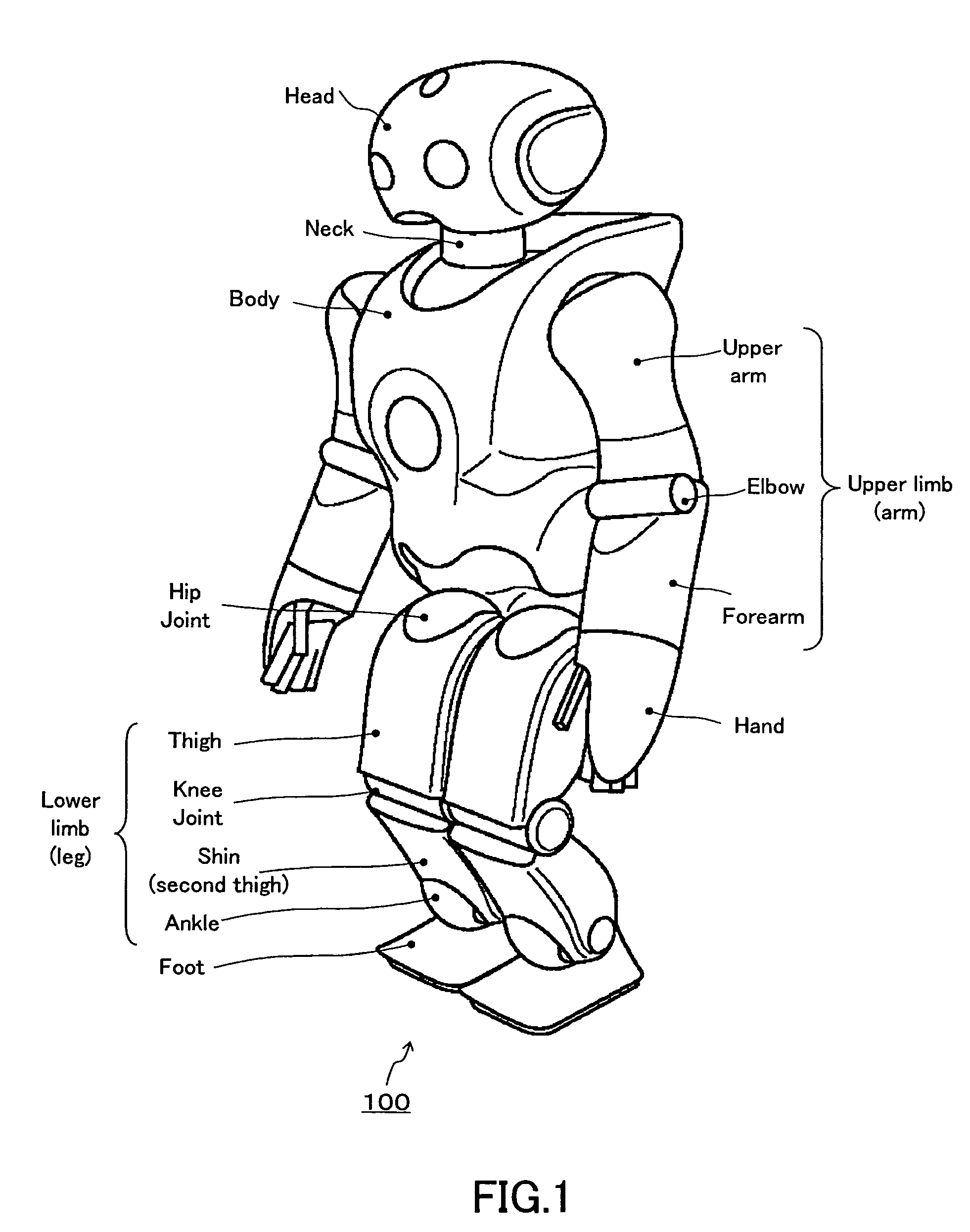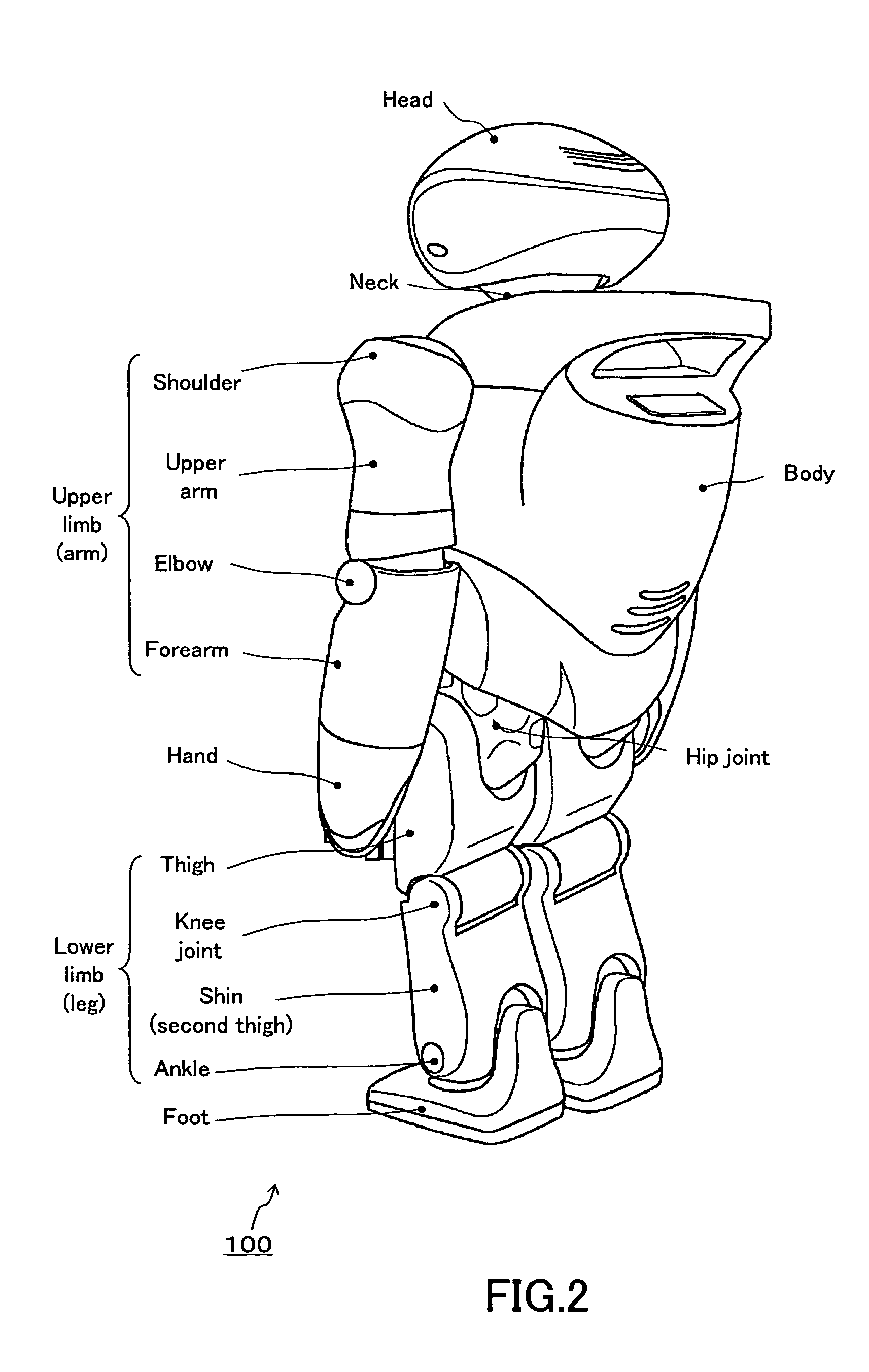System and method of controlling a legged locomotion robot
a technology of moving control apparatus and method, which is applied in the direction of electric programme control, program control, instruments, etc., can solve the problems of difficult control of upright posture, difficult to recover upright position of upright robot, and more unstable bipedal movement in upright posture, etc., to achieve good control, high accuracy, and stable posture
- Summary
- Abstract
- Description
- Claims
- Application Information
AI Technical Summary
Benefits of technology
Problems solved by technology
Method used
Image
Examples
Embodiment Construction
[0095]The present invention will be described in detail below concerning the embodiments thereof with reference to the accompanying drawings.
[0096]A. Mechanical Construction of the Legged Locomotion Robot
[0097]FIGS. 1 and 2 are front and rear views, respectively, of an embodiment of the humanoid type legged locomotion robot 100 according to the present invention. It is in upright position. As shown, the legged locomotion robot 100 includes a body, head, right and left upper limbs, and right and left lower limbs for the legged movement. A control unit (not shown) built in the body provides a system control of the entire robot.
[0098]Each of the right and left lower limbs includes a thigh, knee joint, second thigh, ankle and foot. The lower limb is coupled by a hip joint to the bottom of the trunk. Each of the right and left upper limb includes an upper arm, elbow joint and forearm. The upper limb is coupled by a shoulder joint to each upper edge of the trunk. Also, the head is coupled...
PUM
 Login to View More
Login to View More Abstract
Description
Claims
Application Information
 Login to View More
Login to View More - R&D
- Intellectual Property
- Life Sciences
- Materials
- Tech Scout
- Unparalleled Data Quality
- Higher Quality Content
- 60% Fewer Hallucinations
Browse by: Latest US Patents, China's latest patents, Technical Efficacy Thesaurus, Application Domain, Technology Topic, Popular Technical Reports.
© 2025 PatSnap. All rights reserved.Legal|Privacy policy|Modern Slavery Act Transparency Statement|Sitemap|About US| Contact US: help@patsnap.com



